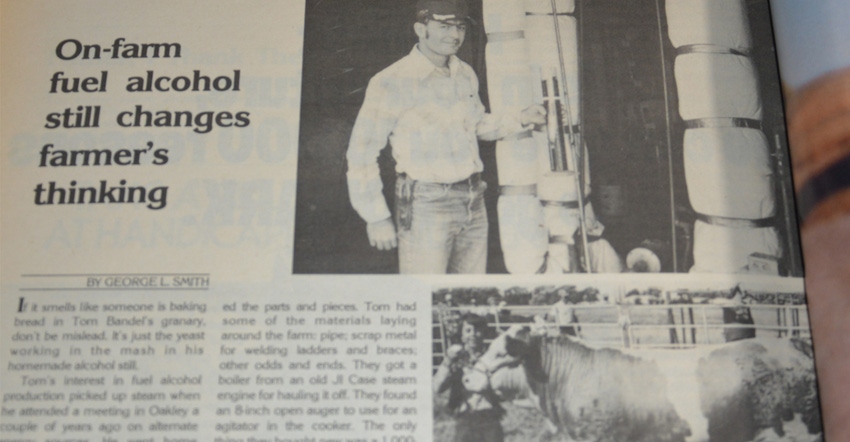November 9, 2020

Ethanol is big business in Kansas today, but back in its infancy in 1980, it was being touted as a potential farm-produced fuel to supply the needs of individual farmers.
Among the early adopters was Tom Bandel, a farmer in Cheyenne County, who purchased a still and began manufacturing alcohol with his brother, Bob, who was a drag racer and had faith in the fuel quality of alcohol.
The pair spent about $4,000 invested in their still, with many of the parts salvaged on the farm. A “batch” turned about 30 bushels of corn into 75 gallons of fuel and enough wet distillers grain to feed about 275 head of cattle.
70 years ago
George Fuhrman of Atchison County had found a “miracle” crop to renew the tired soils on his 50-year-old farm: red clover.
Fuhrman said planting the sweet legume in his rotation of corn, wheat, and oats gave him yields that were twice the county average as well as providing an additional cash crop of hay or seed.
In addition to the clover rotation, he terraced the entire farm, farmed on the contour and seeded a strip of brome on the contour above each terrace to prevent silting.
65 years ago
The farmers of southwest were just beginning to develop the miracle of irrigation back in the winter of 1955. The new 10-county Southwest Kansas Water Users Association was getting organized, passing a constitution and making business decisions.
The group committed to carry out research on existing groundwater sources and the rate of recharge; encourage practices to hold rainfall including soil conservation, watershed programs, ponds and reservoir; perform a study of what policy should be regarding use of existing water supplies for irrigation, municipal, industrial and other uses; promote study of irrigation efficiency; and promote research on crops and production methods to make the best use of irrigation water.
55 years ago
Electricity on the farm wasn’t new back in 1965, but the “total electric” home was still a dream for many farm families. The great labor-saving tools of electric clothes washers, dryers and water heaters were hot products in advertisements of the day.
Popular suggestions for Christmas gifts in December of 1965 were electric blankets, ranges, refrigerators and, of course, television sets.
30 years ago
Corn yields were hitting near-record highs in 1990, averaging 130 bushes to the acre across the state according to numbers from Kansas Agricultural Statistics Service, coming very close to the record 136 bushels set in 1986.
Corn in Kansas State University demonstration plots did even better in some areas, with the test average going above 200 bushels per acre in Finney and Thomas counties.
Goerzen is executive director of the Old Cowtown Museum. She writes from Wichita.
About the Author(s)
You May Also Like




